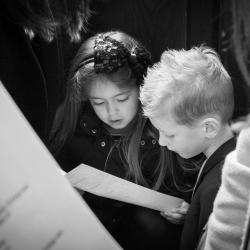Hervormde Kerk
Harich, NL
Reformed church and churchyard, consisting of a simple nave from 1663 at a large, partly 12th century tower, made of tuff stone at the bottom, higher up of brick; under the slates the spire also consists of brick. Above the entrance of the church on the south side memorial stone from 1663. In the church pulpit, rear bulkhead and sounding board, baptismal fence; behind the pulpit late 18th century marble tomb for UA Rengers and family. Bell tower with the sound of two bells by P. Overney, 1682 and 1683, diameters respectively: 81 cm. and 96 cm.






